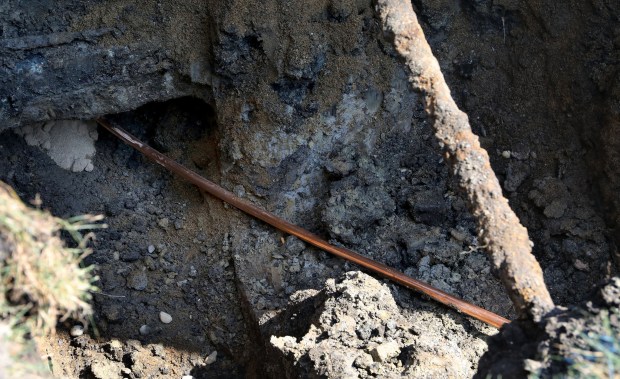Lead can be a useful metal, but in drinking water, it can cause long-term health damage to people.
And because lead in drinking water comes primarily from water lines made of lead, water utilities in Indiana are required this year to make an inventory of their lead service lines.
Customers may be asked to help with the inventories.
The city of Valparaiso and Indiana American Water have announced plans to conduct inventories in the areas they serve. Officials of the Hammond and East Chicago water utilities did not reply to requests for information for this story.
“We want the public to know that the water in Valparaiso is safe and we have an extensive inventory of the service lines on our side of the utility,” Matt Zurbriggen, Valparaiso’s deputy city service director, said in a news release. “We are required to submit an inventory showing the materials used on the customers’ side of the line now, and ask for the community’s help so that we can complete this requirement.”
The Indiana Department of Environmental Management requires an inventory this year of lead in the home service lines, to comply with a U.S. Environmental Protection Agency rule.
Typically, a water utility owns the service line from the water main to the customer’s property line. The customer owns the water line from the property line into the house.
The water line’s composition is important because research has shown that lead enters drinking water primarily from lead water lines.
Valparaiso residents will be asked to participate in the water line survey by inspecting their service line and submitting the information to the utility, or by allowing an authorized door knocker to enter the home and do the examination. The door knockers will have company badges, and appointments can be scheduled ahead of time, the utility announcement said.
Indiana American Water, whose Northwest Indiana service area includes Gary, Merrillville, Hobart, Portage and Chesterton, “is actively updating our lead service line inventory for both the company and customer served portions in communities we serve,” the company’s external affairs manager, wrote in an email.
Lead pipes are replaced with copper in a Chicago neighborhood. Water companies are asking Lake and Porter County residents to help report lead in their pipes. File – Antonio Perez / Chicago Tribune
“We will be making this information available through a public-facing web-based map later this year,” he added, “in advance of the requirements of the U.S. EPA’s Lead and Copper Rule Revisions.”
He said the company’s inventory could include in-home inspections and “digging test pits to look at service lines.”
“We also plan to launch a web-based tool that will allow our customers to determine and report the material of their service line and will be posting a link to it on our website,” Loughmiller added.
Valparaiso also said it will offer a website for customers to report their service line materials or schedule the in-home assessment.
“Compiling this information is a federal requirement,” the Valparaiso news release said. “However, the information also benefits our community as we learn of any potential lead service lines in homes.
“We want to help residents to be aware and also to qualify for any possible funding that might be available to them for replacing lead service lines in their homes in the future.”
Loughmiller said Indiana American Water has invested nearly $97 million to replace or remove almost 30,000 lead service lines in its Indiana service areas.
That includes nearly 16,600 lead service lines replaced or retired in Indiana American’s service area in Lake and Porter counties.
The Valparaiso water system reported it has replaced 328 lead service lines since 1983. It says 527 are still active, all in the part of the water system owned by the Valparaiso Water Department.
Since 2008, the utility reported, tests have shown the lead level in drinking water has ranged from 2.5 to 6.5 parts per billion, well under the 15 parts per billion action level that would set further monitoring and treatment requirements into motion.
Tim Zorn is a freelance reporter for the Post-Tribune.



